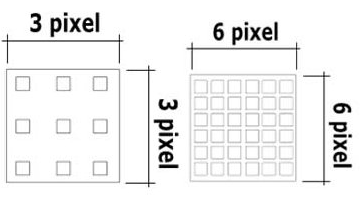The resolution is nothing else but the number of pixels present on each square meter. The resolution is therefore opposite proportional to the pixel pitch: the smaller the distance between two pixels, the higher the resolution (because on the surface of the screen is present an higher number of LEDs). For example a 20 mm pitch screen has a resolution of 2304 pixels: this measure is obtained dividing the total length of a single module (975 mm) by the pixel pitch (in this case 20 mm) resulting in the number of pixels on a single line: 975:20 = 48 pixels. Multiplying the number of pixels present on a single line by the total number of lines the result is the total number of pixels present on the screen surface, also called Resolution. In our example, 48 x 48 = 2304 pixel in total. Given this formula, it is possible to calculate that a 30 mm pitch screen has a resolution of 1024 pixel per module, while a 10 mm pitch screen has a resolution of 9216 pixels per module. It is important to notice that reducing only a few millimeters the pixel pitch, the LED density (and therefore the resolution) increase exponentially.
Remember: The smaller the pitch - the shorter is the minimum viewing distance. The higher the total number of pixels present on the screen is - the higher is the quality image

没有评论:
发表评论